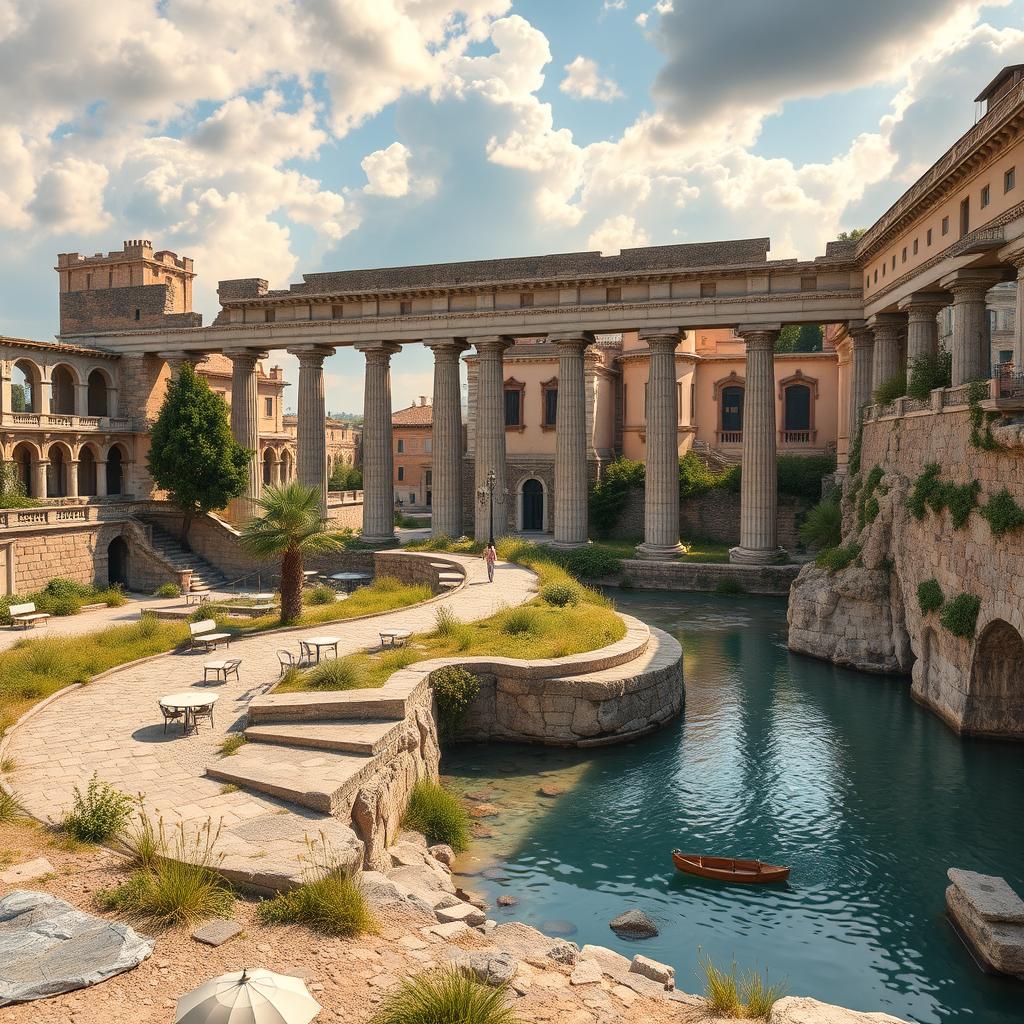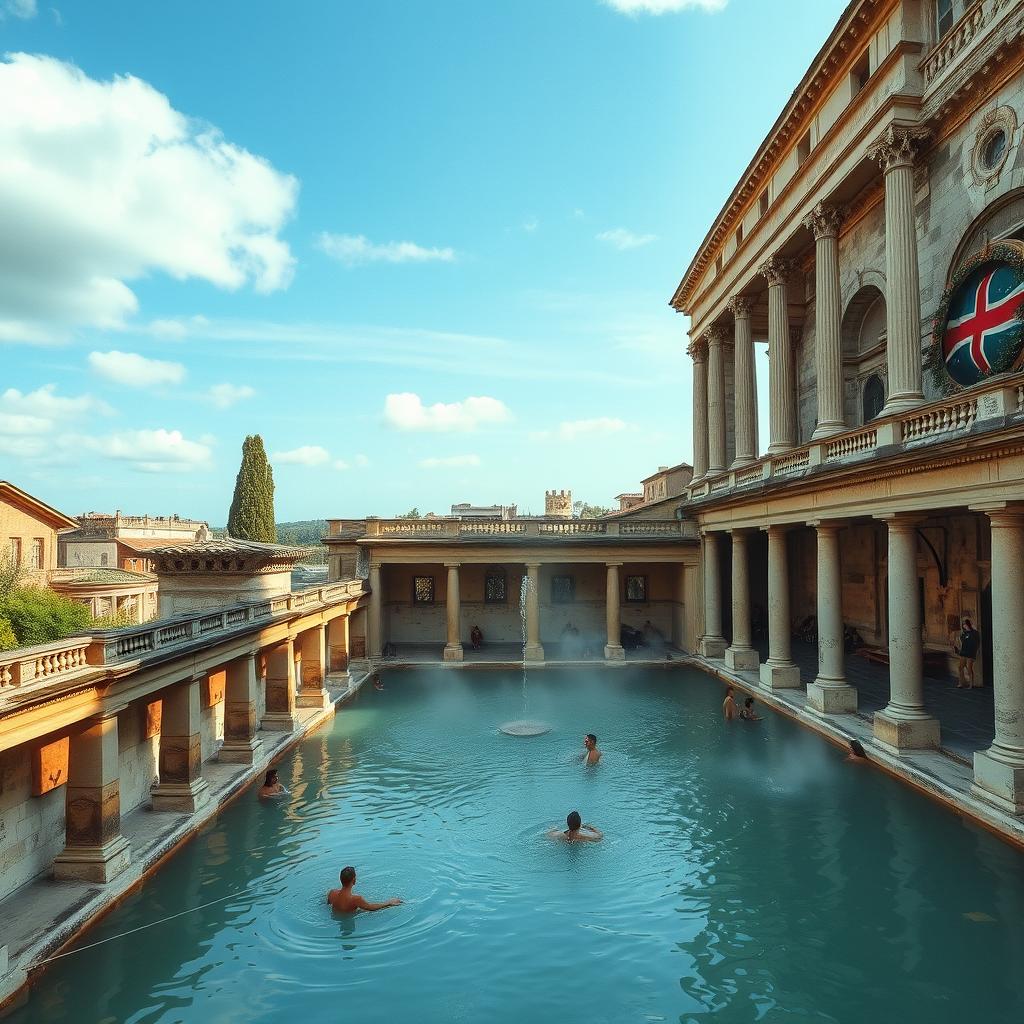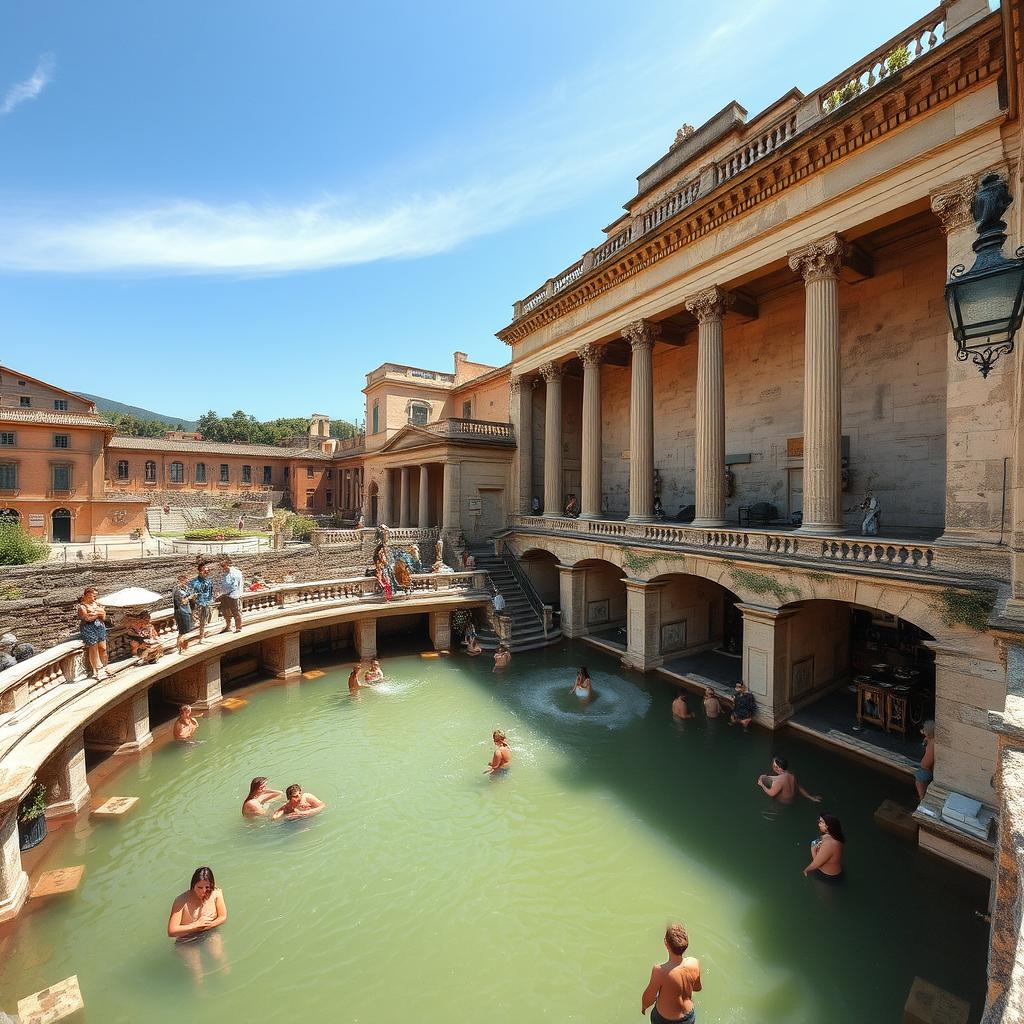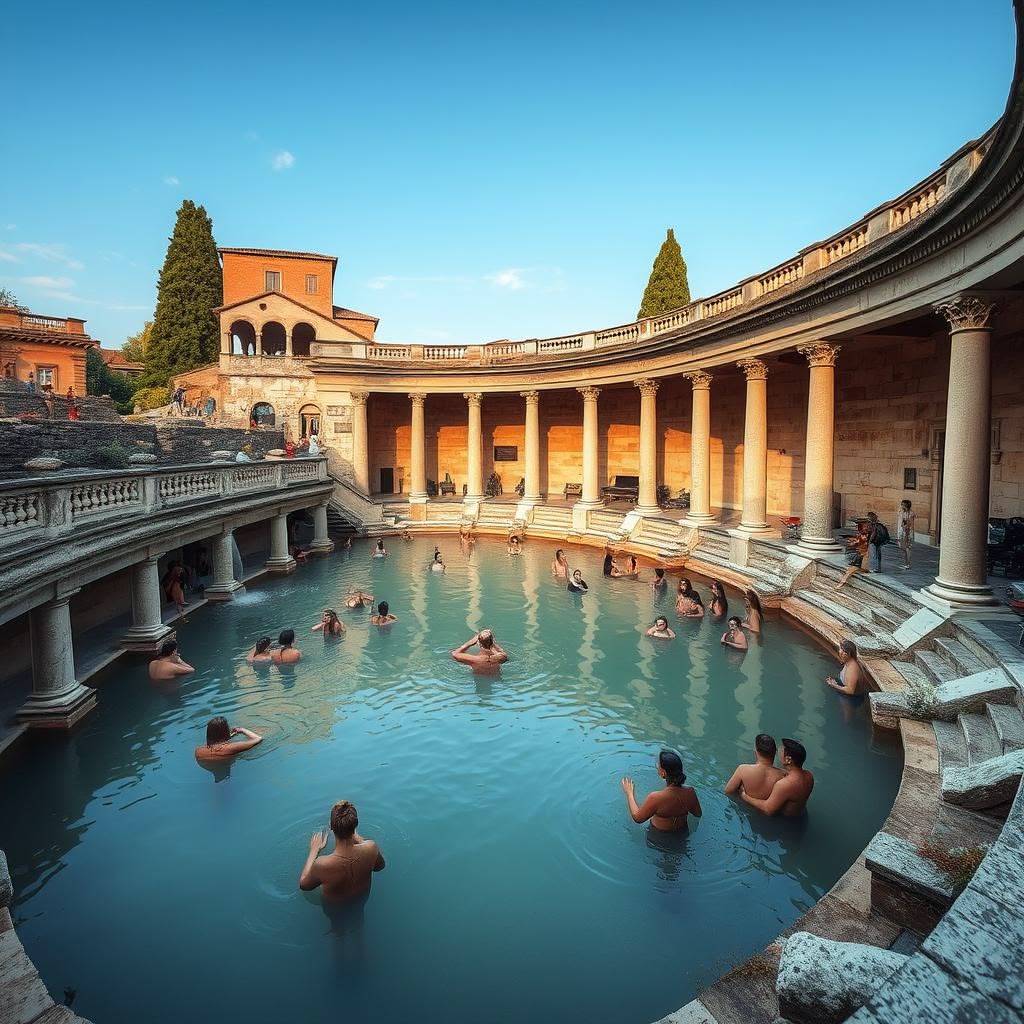The Empire’s Hidden Legacy: Engineering Solutions We’ve Abandoned
Water flows from a public fountain in downtown Los Angeles as a homeless encampment sprawls nearby—residents filling bottles from the same source tourists toss coins into. Across the city, aging pipes leak millions of gallons daily while sewage infrastructure strains under population growth. It’s a scene that would shock ancient Roman engineers, whose solutions to these exact problems still function in parts of Europe after 2,000 years.
The Roman Empire built the most sophisticated public health infrastructure the world would see until the 19th century—systems so effective that when they crumbled after Rome’s fall, public health deteriorated for over a millennium. More remarkable still: they created these systems without germ theory, microscopes, or modern medicine. They built them on observation, engineering excellence, and a pragmatic commitment to public welfare that transcended social class.
Dr. Eliana Fernandez, professor of archaeological engineering at Cambridge University, puts it plainly: “The Romans weren’t just building; they were solving fundamental public health problems through infrastructure. What’s striking is how many of these same problems plague our cities today, despite our technological advantages.”
What’s most surprising isn’t that Romans built impressive structures—it’s that they developed integrated systems addressing water quality, waste management, and public hygiene that worked together to create healthier cities. As modern urban centers face water scarcity, sanitation challenges, and growing inequality in health outcomes, Rome’s forgotten innovations offer solutions hiding in plain sight, preserved in ruins and still-functioning structures across the former empire.

Before: The Modern Urban Health Crisis We Can’t Engineer Our Way Out Of
Today’s cities present a paradox: despite unprecedented technological capabilities, they struggle with basic health infrastructure. According to the United Nations, 2.2 billion people lack safely managed drinking water, while 4.2 billion lack safe sanitation services—problems that extend beyond developing nations. In America alone, the American Society of Civil Engineers gives drinking water infrastructure a C- grade, with an estimated 240,000 water main breaks annually wasting over two trillion gallons of treated water.
New York City’s sewage system overflows into natural waterways during heavy rainfall about 460 times each year. Chicago regularly reverses its river to push sewage into Lake Michigan during storms. And Flint, Michigan’s water crisis exposed how vulnerable even wealthy nations remain to infrastructure failures that the Romans had solved by the 1st century CE.
These challenges exist in a fragmented approach to urban health. Water departments operate separately from sewage authorities, while public health officials have limited input on infrastructure planning. Public bathing facilities have largely disappeared from Western cities, replaced by private bathrooms that reinforce inequality—those without housing lack access to basic hygiene facilities.
Our technical solutions often rely on chemical treatments and energy-intensive systems vulnerable to failure. Water treatment plants require constant electricity and chemical supplies. Sewage systems depend on massive energy inputs to move waste and process it. These systems create single points of failure that ancient Romans deliberately avoided.
Most concerning is the inequality these systems reinforce. Dr. James Howard, urban health researcher at Johns Hopkins University, explains: “Modern infrastructure often follows wealth. Poorer neighborhoods frequently have older pipes, less maintenance, and fewer amenities like parks and public facilities. The Romans understood that public health required universal access to certain basics—clean water, sanitation, and hygiene facilities.”
As climate change intensifies these challenges—bringing water scarcity to some regions and overwhelming infrastructure with storms in others—engineers and public health officials are increasingly looking to history for solutions. What they’re finding in Rome’s ruins offers a blueprint for more resilient, equitable approaches to urban health.

After: Rome’s Integrated Approach to Engineering Public Health
Rome didn’t just build impressive structures—they created systems that worked together to protect public health through multiple, complementary approaches. These systems were remarkable not just for their engineering but for their accessibility and maintenance protocols that ensured their benefits reached all city residents.
The Aqueduct Revolution: More Than Just Water Delivery
Rome’s aqueducts represent history’s most ambitious public works project before the modern era. By the 3rd century CE, eleven major aqueducts supplied Rome with an estimated 1 million cubic meters of water daily—equivalent to about 200 gallons per person. This abundance allowed for uses far beyond basic drinking needs.
What made the aqueduct system truly revolutionary was its sophisticated water quality management. Roman engineers understood the critical importance of source protection, selecting springs and headwaters for their purity. The aqueducts themselves incorporated multiple purification methods during water’s journey to the city.
“The Romans created settling tanks at regular intervals along aqueducts,” explains Dr. Marcus Antonelli, who studies ancient water systems at Rome’s Sapienza University. “These tanks allowed sediment to settle out before water continued its journey. They also incorporated cascades where water would fall over a series of steps, aerating it and improving taste while reducing certain contaminants.”
The aqueduct system’s most overlooked feature was its sophisticated distribution network within cities. Water flowed to three types of destinations in order of priority: public fountains accessible to all citizens, public baths, and finally, private connections for wealthy homes. This hierarchy ensured that even during shortages, public health needs came first.
Critically, the Romans created redundancy in their water systems. Multiple aqueducts served major cities, often from different water sources. When one needed maintenance or suffered damage, others continued functioning. This redundancy principle extended to the distribution network, with interconnections allowing water to be rerouted during maintenance.
The durability of these systems remains their most impressive feature. The Pont du Gard aqueduct in France and Segovia aqueduct in Spain still stand after two millennia. More remarkably, aqueducts built by Emperor Justinian in Constantinople (now Istanbul) continued supplying water to the city into the modern era, with some components functioning until the 19th century.
The Cloaca Maxima: The World’s First Integrated Sewage System
Perhaps no Roman innovation has been more historically underappreciated than the Cloaca Maxima—the “Greatest Sewer” that transformed Rome from a disease-prone settlement into a metropolis capable of supporting a million residents. First constructed around 600 BCE and continuously expanded, this engineering marvel represented the world’s first large-scale sewage system.
What distinguished the Cloaca Maxima from earlier drainage ditches was its comprehensive approach to waste management. The system collected both stormwater and sewage, preventing the flooding that plagued ancient cities while removing human waste from dense urban areas. Its main channel—large enough for a wagon to drive through—connected to a network of smaller tunnels that serviced public latrines, bath complexes, and some private homes.
The system’s true ingenuity lay in its self-maintaining design. “Roman engineers created a constant flow of water through the sewers by diverting a portion of aqueduct water to flush the system,” notes Dr. Fernandez. “They understood that moving water prevents buildup and reduces odors, even if they didn’t understand the microbial reasons why.”
This hydraulic engineering feat included features still found in modern systems: access points for maintenance, overflow mechanisms for storm surges, and gradient calculations that used gravity rather than mechanical pumps. The main sewer lines were constructed with overlapping stone blocks in an arch formation that distributed pressure, allowing them to withstand earthquakes and millennia of use.
Most remarkably, the Cloaca Maxima continues functioning today, 2,600 years after its initial construction. Parts of the system still drain areas of modern Rome, with sections incorporated into the contemporary sewage infrastructure. No modern sewage system has demonstrated comparable longevity.
Roman Baths: Public Health Centers Disguised as Social Spaces
If aqueducts and sewers formed Rome’s infrastructure backbone, public baths represented its most visible public health intervention—facilities that combined hygiene, preventative health, and social welfare in a model modern cities have largely abandoned.
The scale of Rome’s commitment to public bathing is staggering. Imperial Rome featured nearly 900 public baths, ranging from neighborhood facilities to massive bath complexes like the Baths of Caracalla, which could accommodate 1,600 bathers simultaneously. These weren’t luxuries but essential infrastructure, available to citizens of all social classes for minimal fees—and often free to the poorest residents.
“Roman baths weren’t just about cleanliness,” explains Dr. Antonella Romano, medical historian at the University of Barcelona. “They represented a sophisticated approach to preventative health. The typical bathing sequence—moving from warm rooms (tepidaria) to hot rooms (caldaria) and cold plunges (frigidaria)—stimulated circulation, opened pores for cleaning, then closed them. This process helped prevent skin infections common in ancient cities.”
Beyond basic hygiene, baths incorporated elements we would recognize as physical therapy and preventative medicine. Many included exercise courts (palaestrae) where bathers performed calisthenics before bathing—similar to modern recommendations for warming up before hydrotherapy. Massage rooms offered treatments for muscular ailments, while some larger facilities included medical offices where physicians could examine patients.
The sophisticated climate control within bath complexes represents an overlooked engineering achievement. Hypocaust systems—essentially underfloor heating created by circulating hot air through hollow spaces beneath floors and within walls—created different temperature zones without electricity. Some facilities even incorporated windows made of mica or thin selenite, allowing natural light while trapping heat—an early form of passive solar design.
Perhaps most relevant to modern public health challenges, Roman baths democratized access to hygiene. “In Roman thinking, regular bathing wasn’t a luxury but a necessity for urban living,” notes Dr. Romano. “By making these facilities publicly available, they prevented the spread of diseases that flourish when hygiene becomes a privilege only the wealthy can afford.”

The Bridge: Implementing Roman Wisdom in Modern Urban Design
The principles behind Rome’s public health infrastructure offer solutions to contemporary challenges—not through wholesale recreation of ancient systems, but by applying their underlying approaches to modern contexts. Several cities have already begun this implementation, demonstrating the viability of Roman-inspired solutions.
Water Security Through Redundancy and Passive Systems
The Roman approach to water security relied on multiple sources and gravity-powered delivery—principles increasingly valuable as climate change threatens water supplies and energy costs rise. Portland, Oregon has adapted this approach with its gravity-fed Bull Run watershed system, which requires minimal pumping and provides naturally pure water through protected source areas—exactly as Roman engineers prioritized.
In Spain, the European Union has funded restoration of Roman water systems in regions facing desertification. The Córdoba province project has revitalized Roman-era cisterns and distribution channels, creating drought resilience while reducing energy costs. Project director Elena Sanchez reports: “These systems survived centuries because they work with natural processes rather than fighting them. The reservoirs capture seasonal rainfall and distribute it through gravity alone.”
For water-stressed regions, Rome’s emphasis on public fountains offers a model for equitable access. Following severe drought, Cape Town, South Africa established public water points inspired by Roman models, ensuring that water access remains available to all citizens regardless of housing status. These fountains prioritize drinking water during shortages while limiting wasteful uses—exactly as Roman distribution systems were designed to do.
Sustainable Sewage Management Through Green-Gray Infrastructure
The Cloaca Maxima’s integration of stormwater and sewage management through gravity-fed systems has inspired modern “green-gray” infrastructure approaches. Philadelphia’s “Green City, Clean Waters” program represents the largest modern implementation of these principles, using parkland and green spaces to absorb rainwater before it enters the sewage system—reducing overflows while creating public amenities.
“What’s remarkable about Philadelphia’s approach is how it echoes Roman pragmatism,” notes environmental engineer Dr. Sarah Johnson. “The Romans used their sewers to drain the marshy Forum area, turning problems—excess water—into solutions by channeling it to flush waste. Philadelphia similarly turns stormwater from a problem into a resource.”
The durability of Roman sewers has also influenced material science. Netherlands-based concrete manufacturer Romein has developed self-healing concrete containing limestone-producing bacteria that activate when cracks form—inspired directly by the crystalline deposits that have naturally sealed and strengthened ancient Roman sewers over centuries.
Most promising is the revival of Roman maintenance practices. Rather than waiting for catastrophic failures, cities including Tokyo and Zurich have implemented preventative maintenance programs for underground infrastructure based on the Roman curator aquarum model—officials specifically charged with regular inspection and maintenance of water systems, whose records show scheduled maintenance rather than crisis response.
Reviving Public Hygiene Facilities for Health Equity
Perhaps the most visible return to Roman wisdom is the revival of public bathing and hygiene facilities. Budapest, Hungary has maintained its historic thermal baths—direct descendants of Roman facilities built when the city was Aquincum, a Roman provincial capital. These facilities serve both tourists and locals, maintaining the Roman tradition of accessible hygiene and preventative health.
More innovative is the growing movement to address hygiene access for homeless populations through contemporary interpretations of Roman facilities. San Francisco’s Lava Mae program converted public buses into mobile shower facilities that travel to homeless encampments—a modern implementation of Rome’s neighborhood bath model. In France, Paris has installed both self-cleaning public toilets and the innovative “Bains-Douches” facilities that provide free shower access throughout the city.
The Roman understanding that public health requires universal access has inspired Helsinki, Finland’s approach to its public sauna network. The city maintains affordable public saunas in all neighborhoods, ensuring that the health benefits of heat therapy and thorough cleansing remain available regardless of housing status—a direct parallel to Rome’s public bath policy.
“What these modern adaptations share with Roman facilities is the recognition that hygiene isn’t a luxury,” explains public health researcher Dr. Howard. “When cities treat basic cleanliness as essential infrastructure rather than personal responsibility, they prevent downstream health costs while preserving dignity.”

Implementing the Roman Approach: Practical Steps for Modern Cities
The revival of Roman public health principles doesn’t require rebuilding aqueducts or constructing massive bath complexes. Instead, cities can implement key Roman approaches through policy shifts and targeted infrastructure investments:
1. Prioritize Redundancy Over Efficiency
Modern infrastructure often prioritizes efficiency, creating single points of failure. The Roman approach valued redundancy—multiple aqueducts, interconnected distribution networks, and backup systems. Cities can implement this principle by developing secondary water sources, creating network interconnections, and designing for partial functionality during failures rather than all-or-nothing systems.
Copenhagen provides a model for this approach, having developed a secondary water system for non-potable uses that can supplement the primary system during shortages or maintenance. This dual-supply approach directly mirrors Rome’s separation of drinking water aqueducts from those supplying baths and fountains.
2. Design for Maintenance and Longevity
Roman infrastructure lasted millennia because it was designed for maintenance. Modern cities can adopt this approach by requiring access points in all underground systems, using durable materials even when initially more expensive, and creating dedicated maintenance funding rather than deferring repairs until failure.
Tokyo’s 100-year sewer planning approach represents a modern implementation of this Roman principle. The city designs all major infrastructure with century-long service lives and mandates materials testing for durability under multiple stress scenarios—an approach that has significantly reduced failure rates compared to systems designed for shorter lifecycles.
3. Ensure Universal Access to Basic Health Infrastructure
The Roman understanding that public health requires universal access to water, sanitation, and hygiene facilities remains revolutionary. Cities can implement this principle by maintaining public drinking fountains in all neighborhoods, creating hygiene facilities accessible without payment, and ensuring that park facilities include restrooms and water access.
Portland, Oregon has implemented this approach by installing public drinking fountains throughout the city—including in areas with large homeless populations—and requiring public restrooms in all new parks. These simple interventions have reduced both public urination and emergency room visits for dehydration among vulnerable populations.
4. Integrate Multiple Functions Into Infrastructure
Roman bath complexes weren’t just hygiene facilities but served as social centers, exercise facilities, and even libraries. Modern cities can adopt this multipurpose approach by designing infrastructure that serves multiple needs simultaneously.
Rotterdam’s water squares demonstrate this principle. These public plazas serve as recreation spaces during dry weather but transform into stormwater detention basins during heavy rainfall—providing both social infrastructure and flood protection in the same space, while educating the public about water management through visible infrastructure.

The Forgotten Wisdom We Need Now
As our cities face growing challenges from climate change, aging infrastructure, and population pressures, the Roman approach to public health engineering offers a roadmap for resilient, equitable solutions. Their systems succeeded not because of technologies we can’t replicate, but because of principles we’ve forgotten: redundancy over efficiency, public access over privatization, prevention over treatment, and maintenance over replacement.
Dr. Fernandez offers a final observation: “The most important lesson from Roman infrastructure isn’t about engineering techniques but about priorities. They considered certain basics—clean water, sanitation, hygiene facilities—as public responsibilities rather than private commodities. That perspective shift alone would transform our approach to urban health.”
Perhaps the most valuable Roman innovation was recognizing that investments in public health infrastructure benefit everyone—preventing disease outbreaks that cross social boundaries while creating cities where all residents could thrive. As we reimagine our urban infrastructure for the challenges ahead, Rome’s forgotten systems offer not just engineering inspiration but a powerful reminder that the healthiest cities are those that protect the health of all their citizens.
What ancient wisdom could transform your city’s approach to public health? The answers may be hiding in plain sight, in ruins that have outlasted the empire that built them—waiting for modern minds to rediscover their genius.

